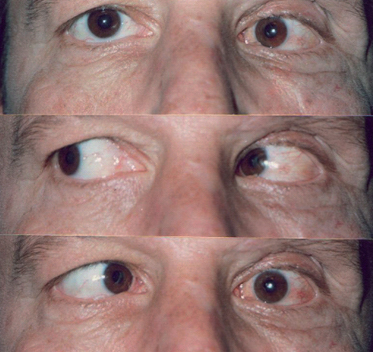Page Contents
OVERVIEW
This page is designed to organize content that is relevant to the topic of abducens nerve palsy. This term is used often in medicine, and it is important that we become as familiar as possible with it.
WHAT EXACTLY IS IT?
Before going any farther, let us make sure we clearly define the “medical problem”. Abducens nerve palsy (cranial nerve VI palsy) refers to the impaired activity of the sixth cranial nerve (the abducens nerve). It manifests as the inability to abduct the eye on the affected side, and can be discovered when evaluating the extra-ocualr movements of a patient during the physical exam.

WHY IS IT A PROBLEM?
This type of nerve palsy can be a sign of a more serious underlying condition.
PATHOPHYSIOLOGY
Understanding the pathophysiology of the abducens nerve can help evaluate for
ORGANIZING THE DIFFERENTIAL
The differential diagnosis for abducens nerve palsy can be organized in a few different ways:
- Can’t miss diagnosis
- Organ system
- Disease category
- Diagnostic modality
- Most common diagnosis
CLINICAL “WORKUP”
Now that the possible causes of abducens nerve palsy have been established, the focus can shift to how one would actually “work-up” a patient who presents with abducens nerve palsy.
- Collecting the history
- Performing the physical
- Ordering studies/tests
- Intrepreting clinical data
Page Updated: 11.30.2016